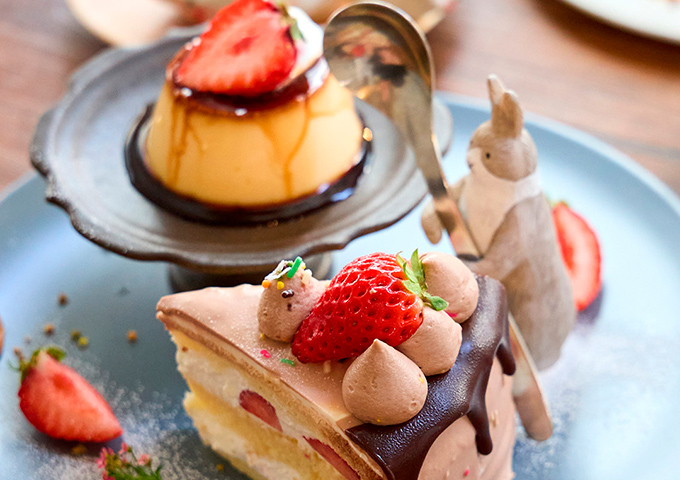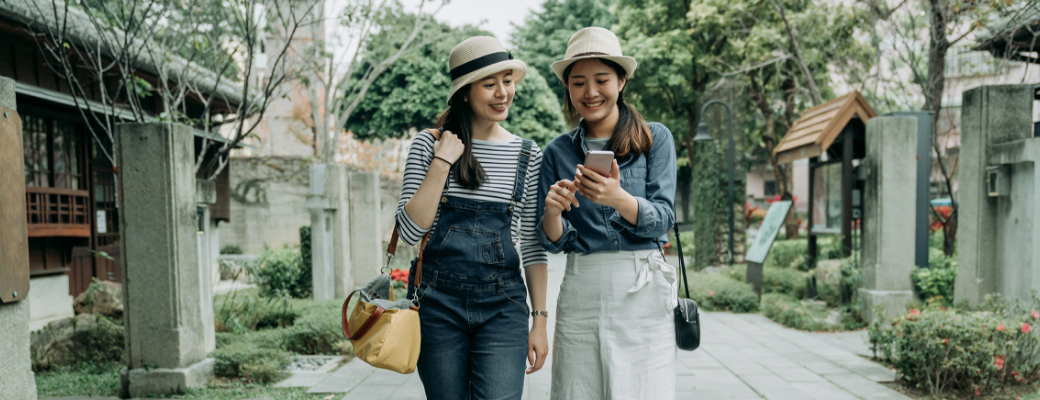
Food and Drinks
Take a relaxing break with cute sweets along the Nankai Line.

Traditional Japan
New year is coming. A new year has started. What do you do in your hometown during New year holidays? Many Japanese go to shrines for “Hatsumoude (the first praying to god)” to thank god for last year, and to pray for peace for the new year.
South Osaka and Wakayama of course has many shrines to pray! At this article, we will introduce you “Hatsumoude” spots we recommend.
What is Japanese god?
Before we start our recommendations, let us introduce about Japanese gods. What kind of beings are they? The shrines many Japanese go for “Hatsumoude” worships a religion called “Shinto”. Shinto has many gods. According to the beliefs of Shinto, gods lies in everything. Gods lies in the sun and moon, the sea and trees, also the units you are using to watch this article.
At shrines, these gods (at some shrines one, at some shrines many) are worshiped. So, the graces of god you may earn are different at each shrine. Try to find your favorite god!
Don’t worry even if you’re not a follower of Shinto. In the past, there were many restricted areas in shrines that women could not enter, but today almost all of those restricted areas are gone. You may pray at shrines like Japanese do even if you are not a follower. Of course, you can enjoy the beauty of the architecture without praying! Come on to Japanese shrines, and try to find your own way to enjoy shrines.
Pray for thriving business at Touka-Ebisu!
The first shrine we will introduce is Imamiyaebisu shrine. A festival called “Touka-Ebisu” is held every year. The god “Ebisu”, which is part of the name of the shrine, is said to be a god that preside over fishery, thriving businesses, and bumper crops, and the god here at Imamiyaebisu shrine is said to especially preside over the businesses of Osaka.
“Touka-Ebisu” is held from Jan 9th to 11th every year, and a million people come to pray during these 3 days. When you visit “Touka-Ebisu”, you will hear voices saying, “Come on and bring bamboo grasses for thriving business!”. Imamiyaebisu shrine gives “Fukusasa (bamboo grass for luck)” for free to the visitors, and shares luck with them. But be careful, don’t go home only with the bamboo grass! The complete “Fukusasa” needs something else – “Engimono (Goods of luck)”! Please bring back home a complete and original “Fukusasa” of yours.
Let's go to "Sumiyossan"!
If you want to go to “Hatsumoude” following the traditions of Japanese, don’t you want to visit a shrine that Japanese love? If you ask the people of Osaka, “Where would you like to go for hatsumoude?”, they would definitely answer, “Sumiyossan (The way of saying Sumiyoshi Taisha in the Osaka dialect)”.
When the night of new years eve begins, people come and gather before the gate. When the sound of drum starts at midnight, the claps of praying start at once, and the shrine will become full with people who pray for luck of the new year. The visitors from Jan 1st to 3rd count up to 2 million every year. Sumiyoshi Taisha is a place many people love.
Enjoy the countless crimson gates
Abeno Shrine is located in a place apx. 7 min from Namba, the center of South Osaka. This shrine is a bit different from the ones we have recommended, since the Guji (chief priest of the shrine) is full of originality.
The Torii (gate to shrine) at the entrance is a place you must go. What do you think is beyond this crimson tunnel? Take a look by yourself.
Do you know “Furinkazan”, the battle flag of Takeda Shingen? Actually, it is said that Takeda Shingen used the battle flag of “Furinkazan” to stand up to the men of Kitabatake, using the same words that originate to Chinese military tactics. The god here, at Abeno Shrine, are the men from Kitabatake. Take a look at the kanji in the shrine, which the words of “Furinkazan” are written.
The Goshuin (proof that you have prayed at this shrine) that change every month and the cute ornaments of foxes are great for souvenirs!
The gracious dolls
Now, let’s move on to Wakayama!
Awashima shrine is located at a port town called Kada, and more than 20,000 dolls which came from around the country lye here.
This is the place where the dolls that have finished their own roles are thanked and prayed for their last moment.
From Jan 1st, the dolls that the family of Kishu Tokugawa (one of the families that once ruled Japan) have dedicated to this shrine are opened to the public.
Take a look at the best dolls of Japan!
The largest Torii in Japan
In the old days, Japanese have said that to “Go to Ise 7 times, go to Kumano 3 times” was a symbol of strong faith in Shinto. “Kumano” said in this quote is “Kumano Sanzan” we will introduce. Praying through the pilgrimage route of Kumano was a very strict asceticism , and was known as a path that purifies the soul from the Heian era (about 1000 years ago). Kumano Kodo connects to Kumano Sanzan, and made peace to many of the people who finished their journey.
Kumano Hongu Taisha Grand Shrine is the center shrine of Kumano Sanzan, and also the 1st shrine you shall visit.
Don’t forget to go to “Ohyunohara”, the ancient ruins of Hongu, which is located 15 mins walk away from Kumano Hongu Taisha Grand Shrine. There is the largest Torii in Japan that is 33.9 m high and 42 m wide. The large Torii that seems to approach to the gods in heven moves the heart of the people who see it.
Watch the 1000 year old Nagi tree
The 2nd place we shall visit in Kumano Sanzan is Kumano Hayatama Taisha Grand Shrine. It is a grand shrine that is located near the ocean, and is contrastive from Kumano Hongu Taisha Grand Shrine that is located deep inside the mountain.
The sacred tree of Nagi lyes on the road from the Torii to the gate of gods. It is a symbol of the god of Kumano, and is said to be more than 1000 years old. This largest sacred tree in Japan is a natural monument of Japan.
The fishermen that work at the sea strongly believed in this god, and was a guardian of safety at the ocean.
The beautiful contrast of the waterfall of Nachi and the crimson pagoda
The last shrine of Kumano Sanzan is here, Kumano Nachi Taisha Grand Shrine. The Grand Shrine above the countless stairs is full of majestic atmosphere.
Once you take a 15 min walk from Kumano Nachi Taisha Grand Shrine , you can see the waterfall of Nachi, which is one of the 3 greatest waterfalls of Japan. The beautiful contrast of the waterfall of Nachi that represents the great nature and the crimson pagoda will show you the Japanese sense of beauty, which regards the symphony of nature and humanity as important, and will move your heart.
*The Info here is based on Nov.2023

